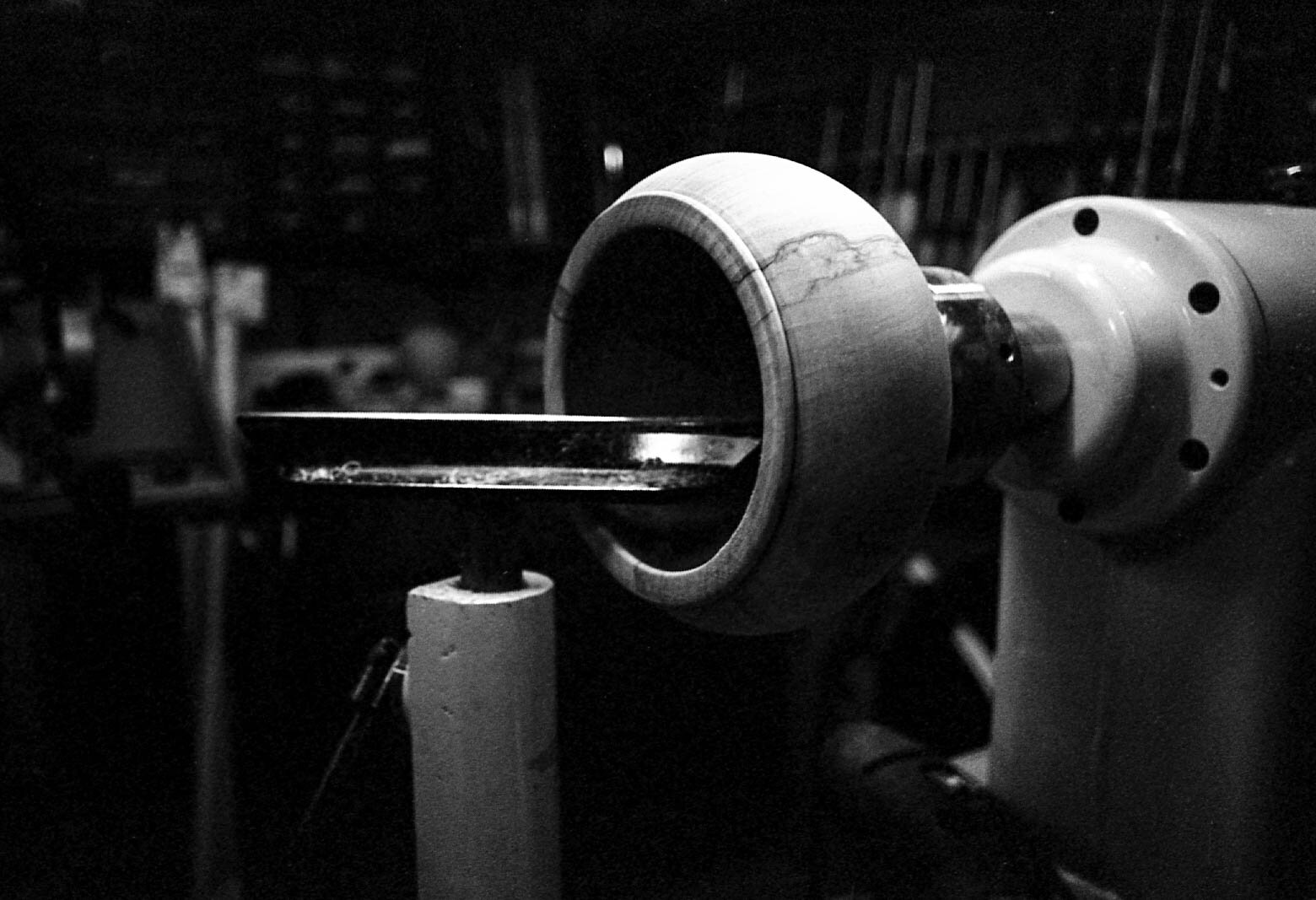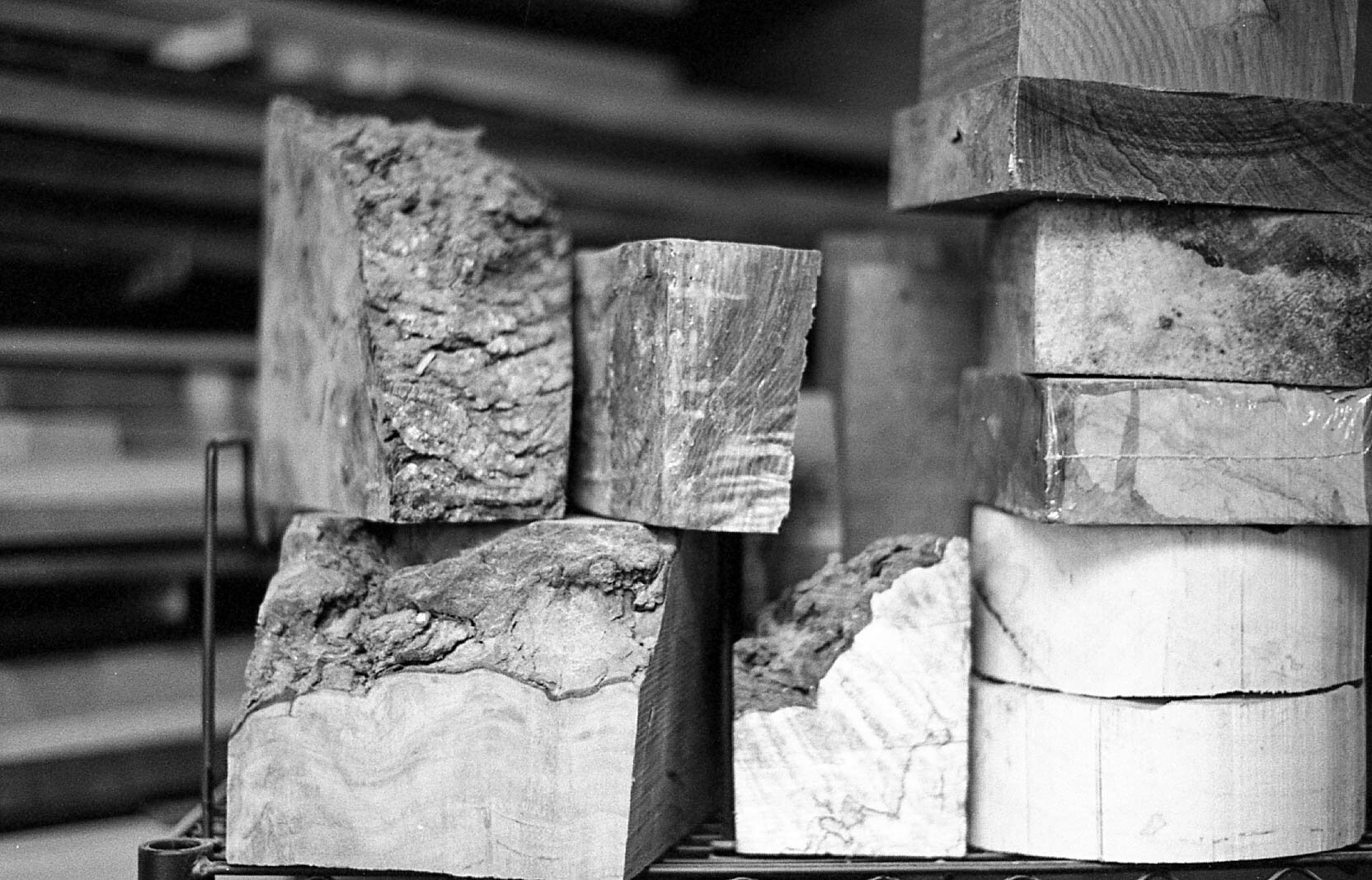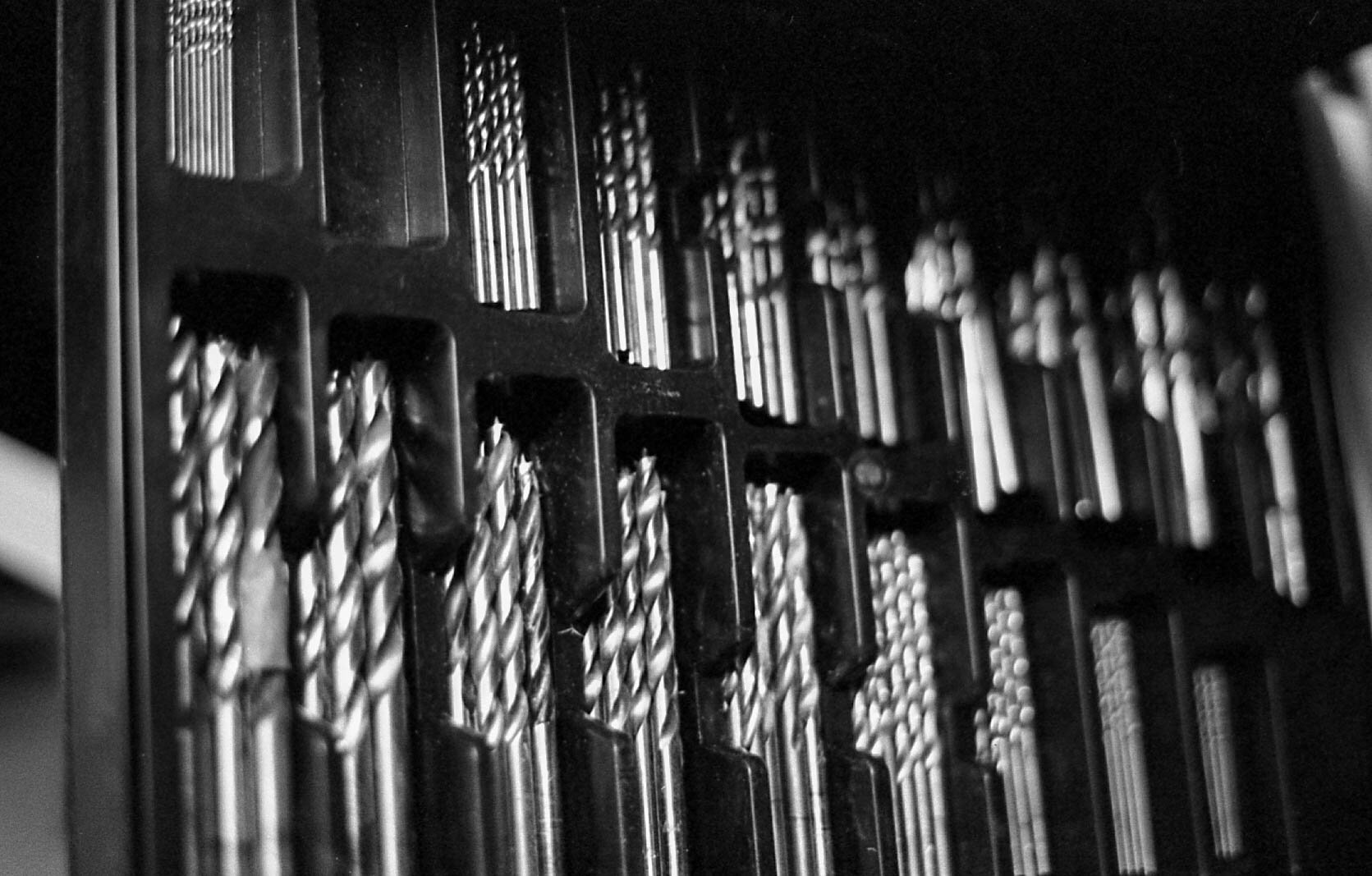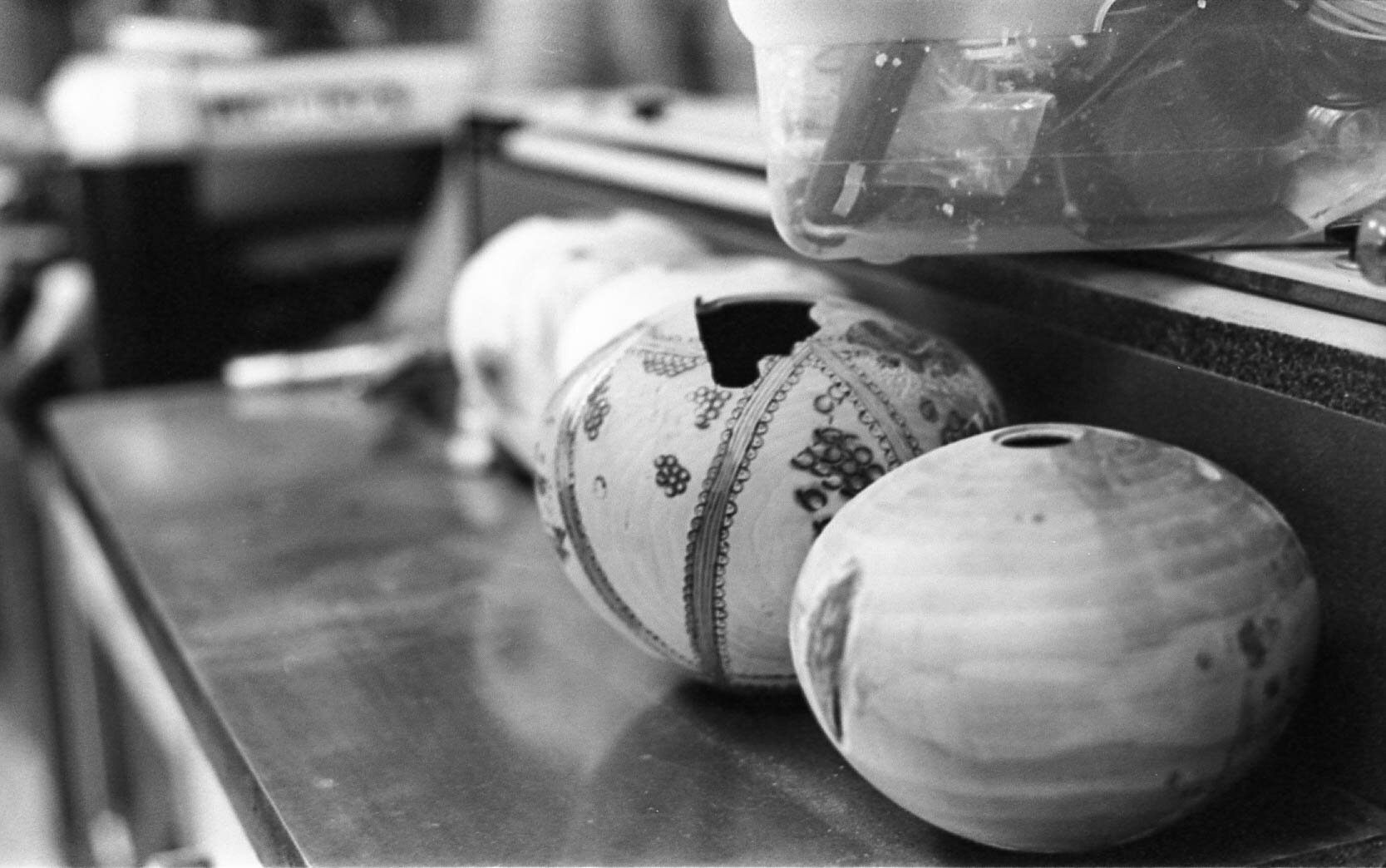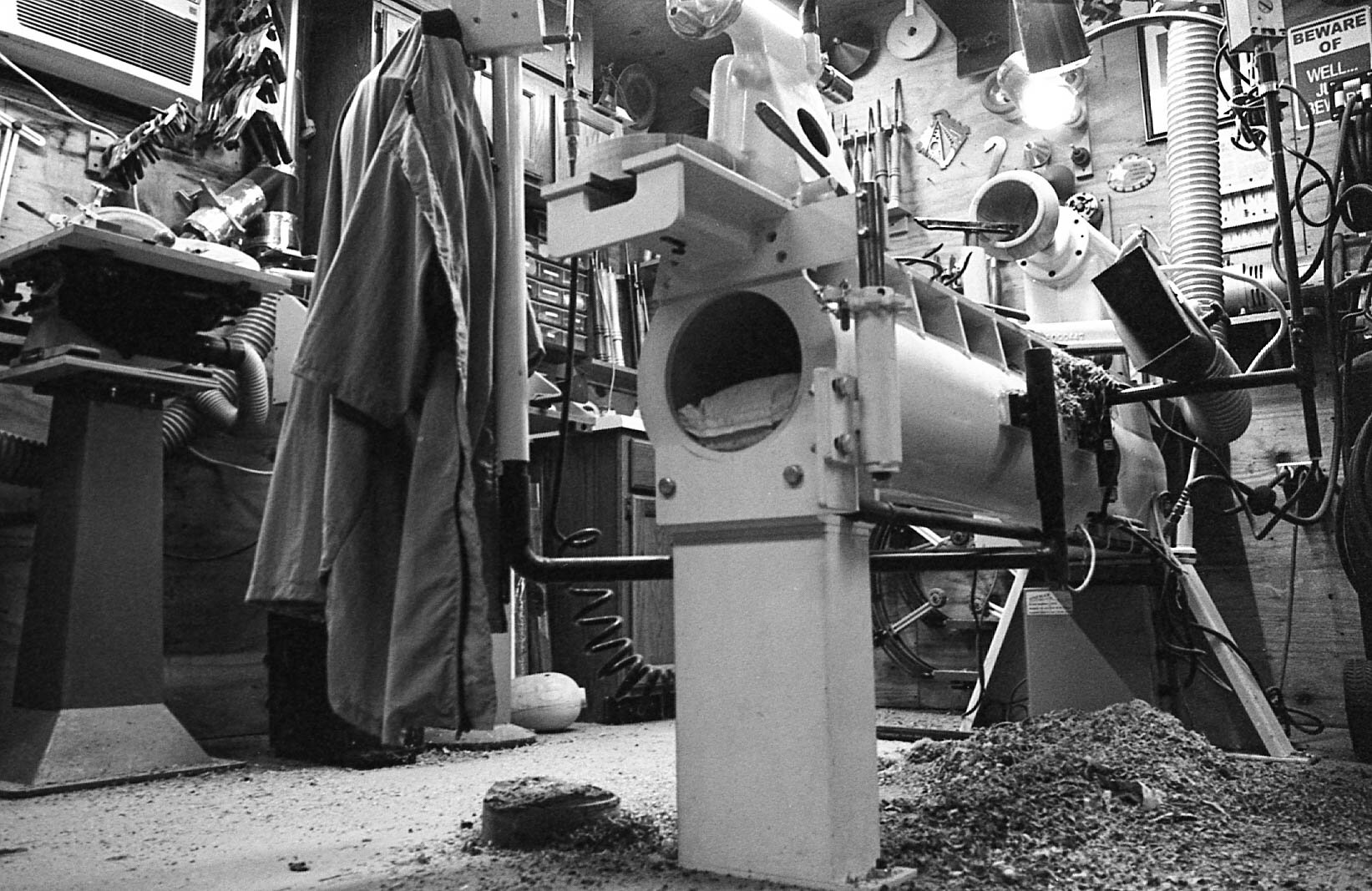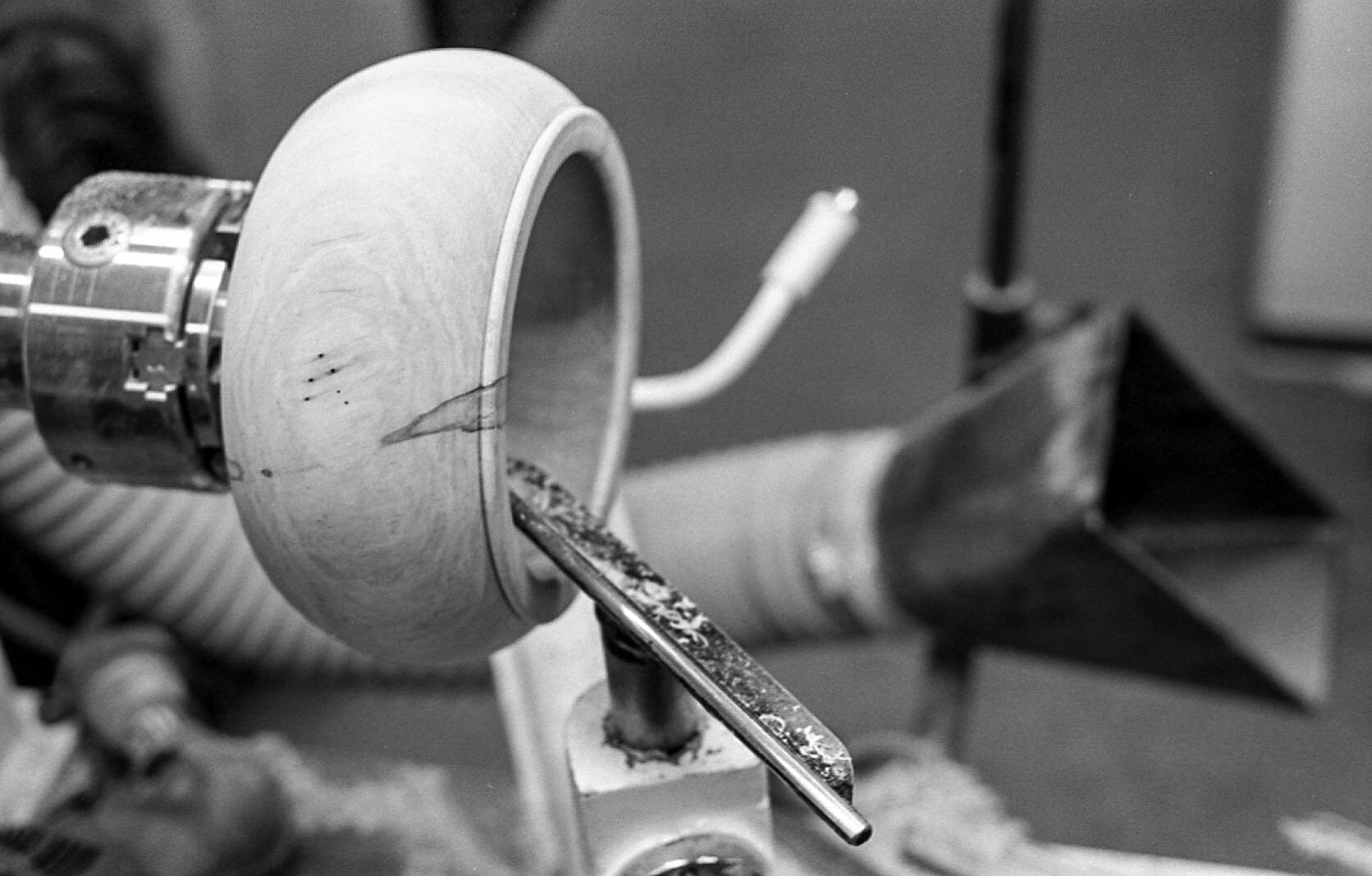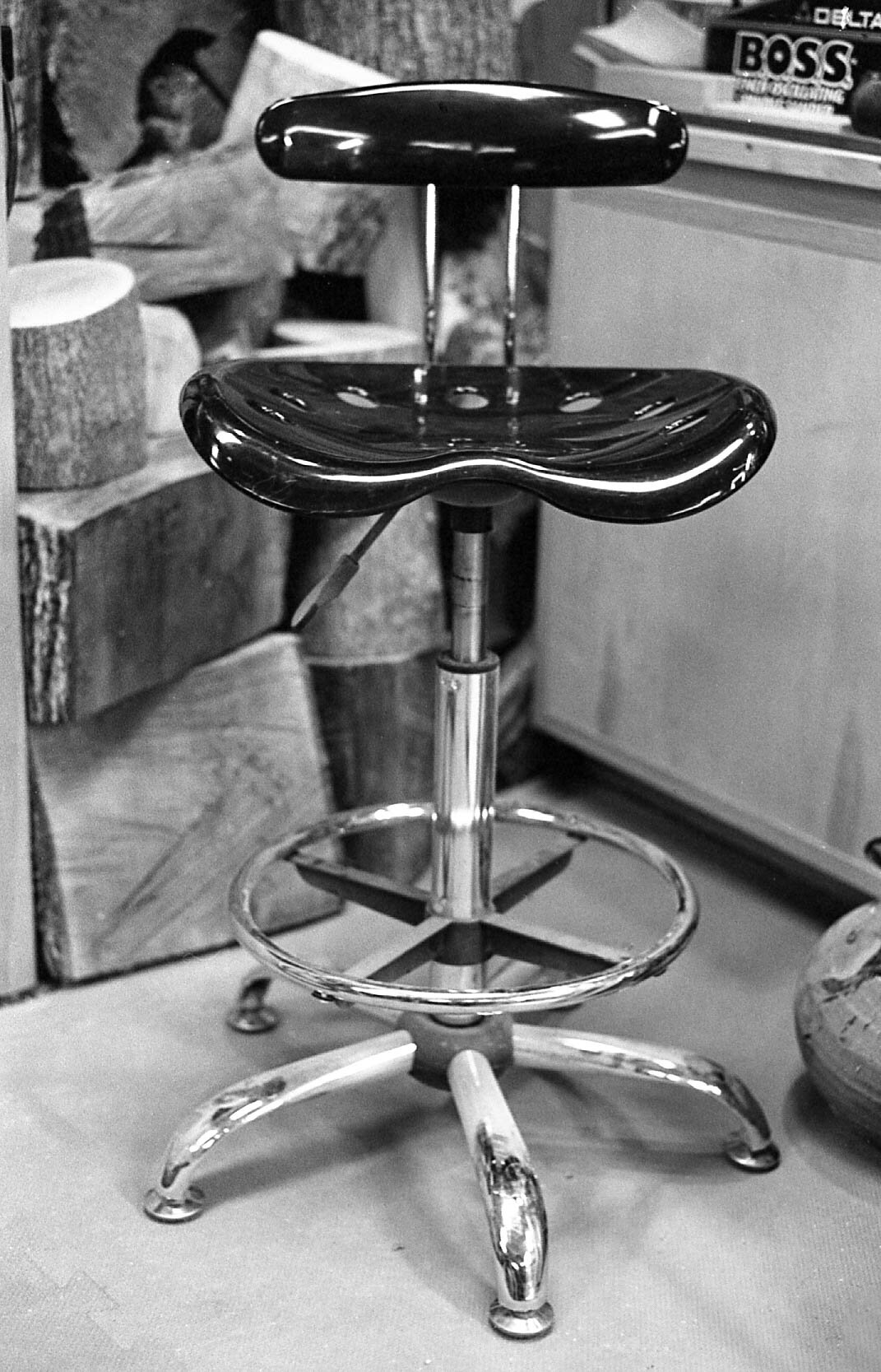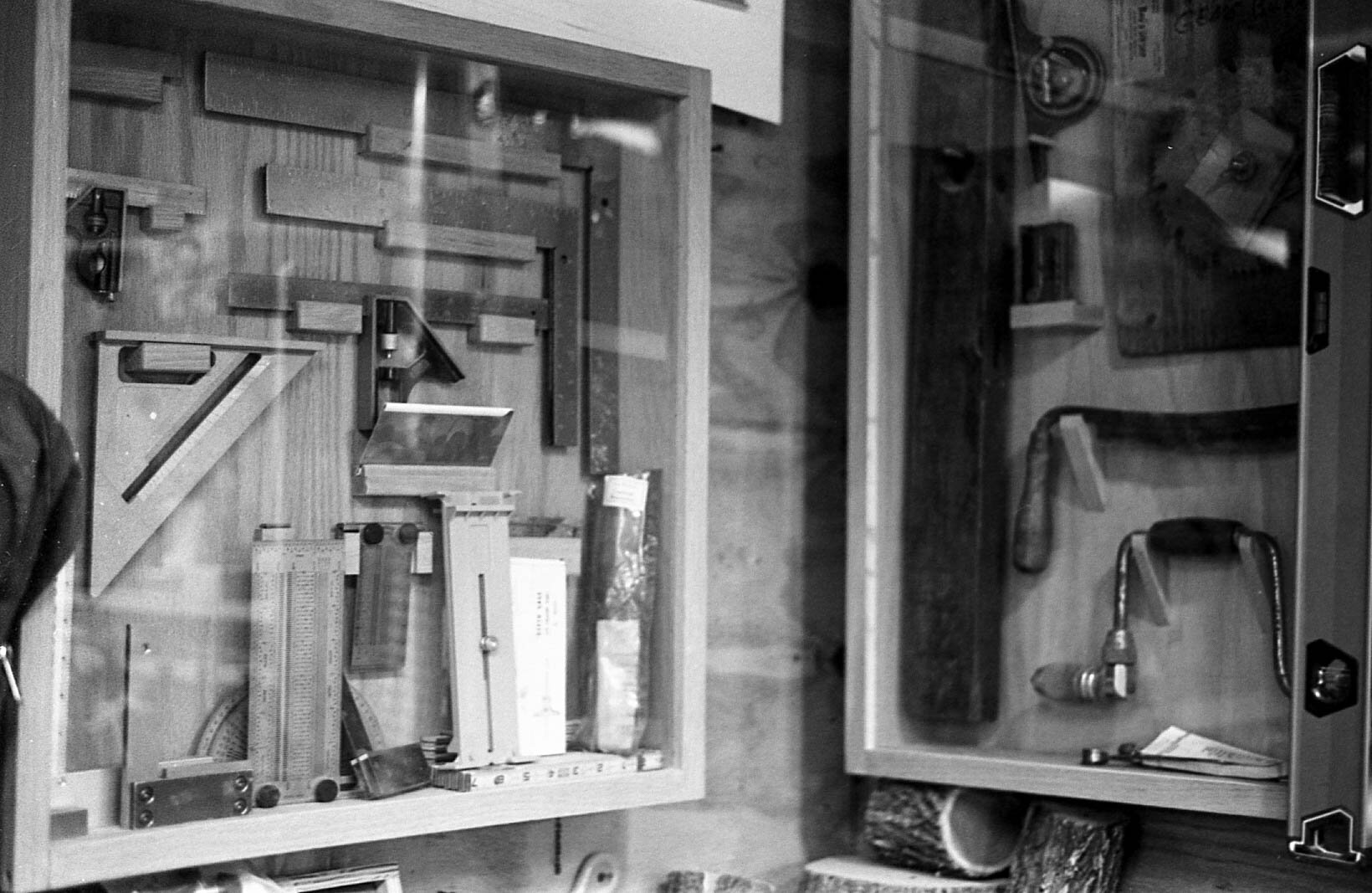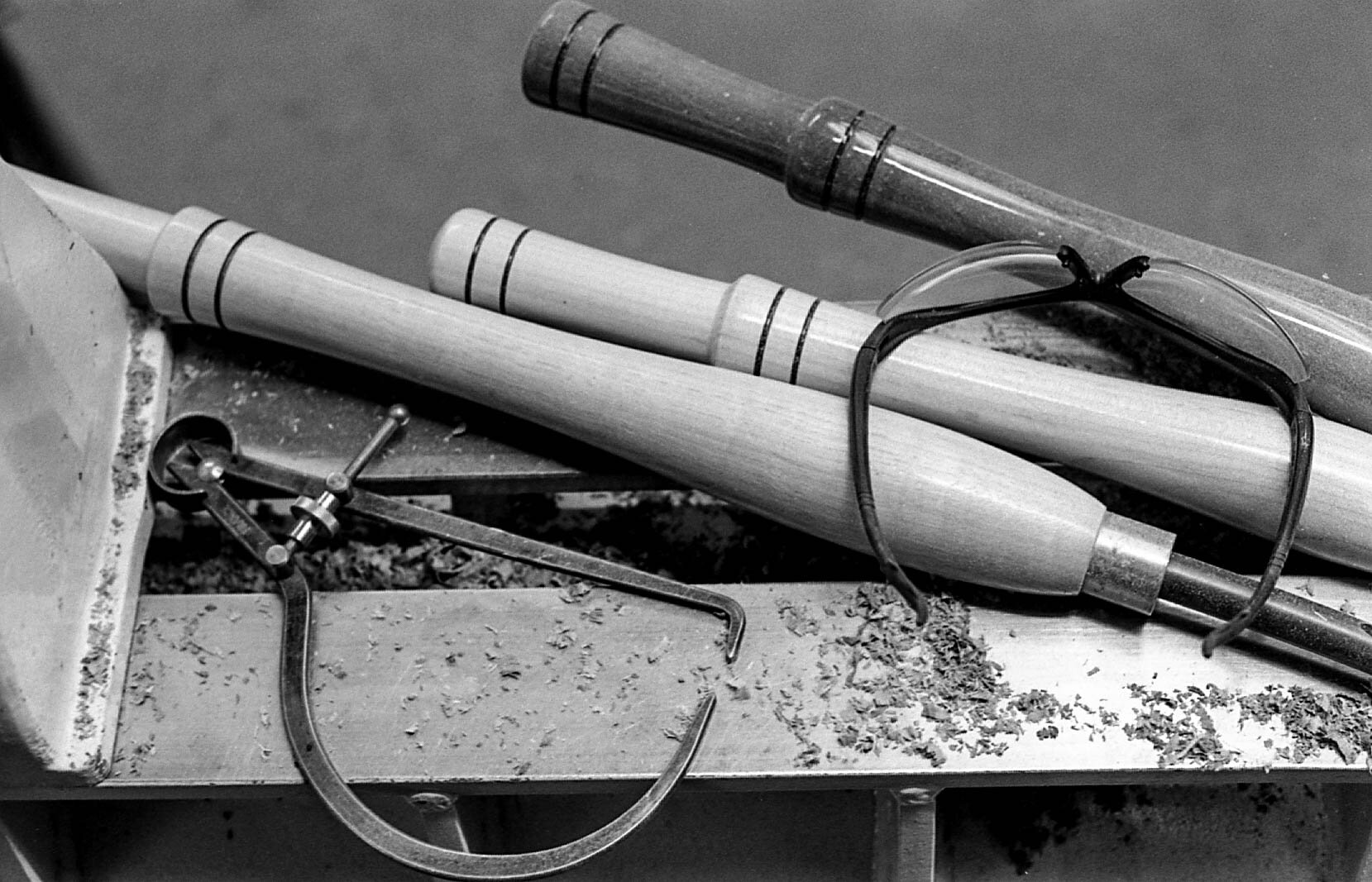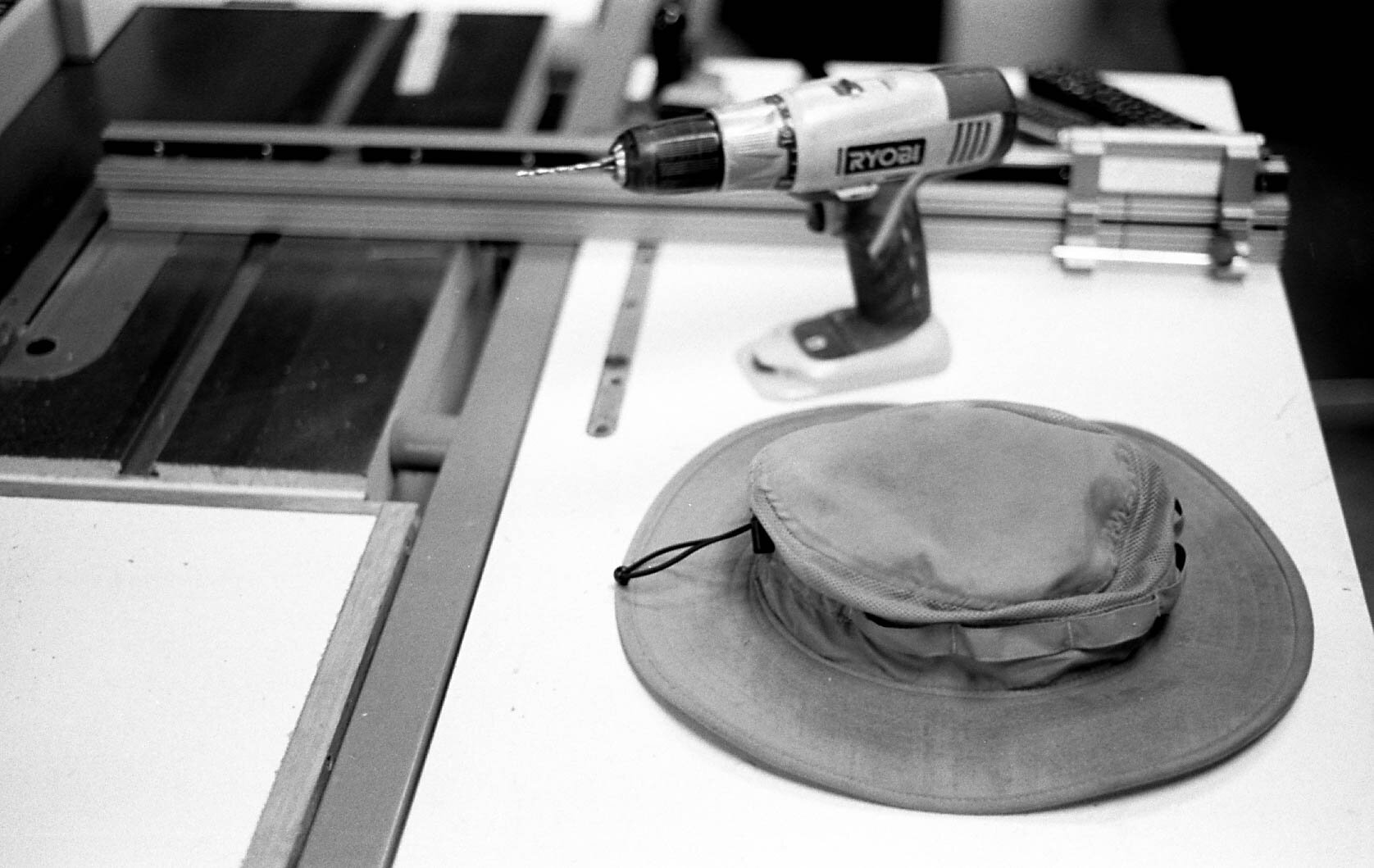This January, sadly, my friend’s father passed away. He was a well-known wood-turner and an amazing artist. As part of the grieving process, I was asked if I would be willing to use his father’s old Pentax film camera to photograph the wood shop. That was a very touching request. I was invited into a really personal area of somebody’s life to celebrate them after they had passed. I was also given the opportunity to record, using my chosen tool and medium, another artist’s tools and medium. So, with the date set, I grabbed my camera “bug out” bag, and headed to the location.
Stacks of supplies
My bag was conveniently stuffed with rolls of Kodak Tri-X 400, and some miscellaneous Canon FD lenses that would be of no use on a Pentax. I also had my Yong Nuo flash, until I arrived on location and realized I left the flash at home. That was alright because I had a tripod. No, no I didn’t. I left it at home. My bug-out bag was turning out to be nothing more than an overly-expensive film cannister bag-of-holding. I still had a few tricks up my sleeve, well, one trick. Kodak Tri-X. This film is notoriously good at being pushed past its box speed, and I had a decent SLR that was without meter and stuck on 1/125s shutter speed, and a 28mm f/3.5 lens. Just as a backup, I did come prepared with a 28mm f/2.8 K mount lens, but I felt that wasn’t really in the spirit of using the artist’s camera if it’s mated to my lens.
And with a slow lens, fixed shutter speed, amazing film, and an iPhone light meter app, I loaded up the K2 and started walking around the shop. I was actually in my element, as I have done a lot of photography with fixed-aperture/fixed-shutter cameras. As long as I could get enough light, or push the film far enough, the shots would be there. The shop was fantastic! A 20×20 space adorned with photos of Norm Abrams and old funny metal signs. A detached 2-car garage, but full of woodworking tools and wood logs, wood planks, saws, knives, clamps, a really nice lathe, and these drawers full of small samples of exotic woods for inlay work. Stock that had been accumulated over many years.
The right tools for the job
I need to pause a second and speak to the Pentax K2. It was mint. Not a blemish on it, and in working order. The 28mm f/3.5 lens was tack sharp, and the accompanying 50mm f/2 was no slouch. The K2 truly was a flagship camera. Even 40 years later, it was completely capable of making amazing photos. Strangely, I wasn’t really focused on the camera, so I didn’t have any photos of the camera. That’s fine, it wasn’t the focal point.
To make an omelet, you gotta break a few eggs.
The focal point was the lathe. This massive machine had been well maintained and looked brand new except for the pile of wood curls 12″ deep at the foot of it, and the tools neatly laid out on the bench. The artist had been working on a piece prior to falling ill, and the work was still attached to the lathe. The hope for this piece is that my friend will be able to finish it.
A Lathe in its element: covered in wood curls.
The struggle to get these photos, was the available light. Luckily, I was working in a shop with adequate fluorescent lighting, and pushing Tri-X to 1600, I was able to shoot nearly every shot between f/3.5 and f/5.6 on the 28mm lens. I did shoot a few shots at f/2 on the 50mm, but those were a tad softer. The 28mm lens was perfect for these photos.
One corner of this interesting shop had two glass display cases with tools. I’d love to get the story of those tools. I managed to capture them on film, and what was interesting, evident in the photo above (behind the chair) was the pile of raw wood logs stacked below the cases. It was art leading up to more art.
In case of woodworking emergency… break glass ?
In the adjacent corner, next to the lathe, was a section of chucks for mounting the wood logs, and two racks of beautifully hand-crafted wood turning knives. Laying out on a table under the knives, more straight-edges and a few micrometers. Everything spoke to the precision of the artist and the pride in his work.
Waiting for the Master
In his passing, the artist left us with some amazing and highly sought-after art, and hopefully his craft and instruction can continue to be shared for generations.
